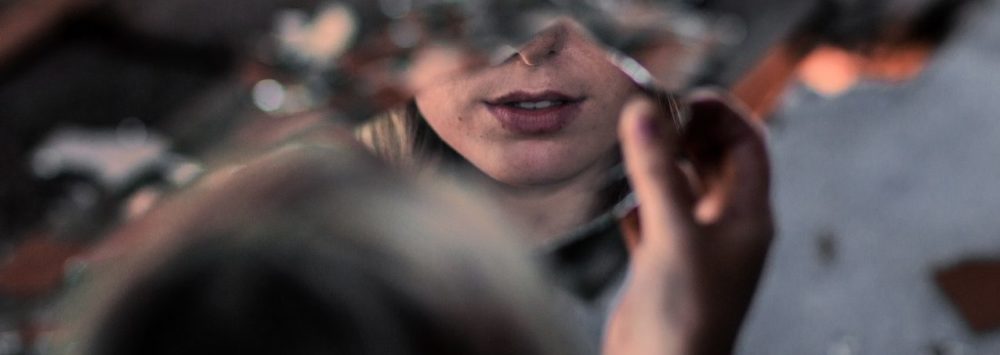This story is part of our blog series called “Stories from the OCD Community.” Stories from the community are submitted and edited by Toni Palombi. If you are interested in sharing your story you can view submission details at www.iocdf.org/ocd-stories.
As of this Saturday, 31 days will have passed since I’ve seen my own reflection.
When I relay this strange truth to family and friends, the responses tend to be quite varied – ranging from a subtle (yet very polite): “So what?” to an incredulous: “Why?” After all, in this aptly named “selfie generation,” how could anyone, much less a female in her early twenties, willfully deny looking at themselves for even one hour?
Three months ago, I would have adamantly agreed with them. But that was before I started on my road to recovery from body dysmorphic disorder (BDD).
According to the Anxiety and Depression Association of America, BDD is “a body-image disorder characterized by persistent and intrusive preoccupations with an imagined or slight defect in one’s appearance.” While the definition is clinical, they are accurate when they use the word “intrusive.”
Before developing BDD, I was a stereotypical, bright-eyed college freshman, eager to take on the academic and social opportunities Temple University had to offer. One such opportunity was a big milestone: my first real relationship! The brace-faced thirteen-year-old in me was jumping for joy, and as my boyfriend and I grew closer, it became clear to everyone but me that I was developing a serious case of puppy love. It was absolutely wonderful – until he shot the puppy.
Though I had always been a typically self-involved teenager, getting dumped unleashed a new – and dark – sense of self-doubt. At the same time, a disturbing new phenomenon emerged: breakouts. My former babyface began to rebel from the stress, and I quickly became distraught. If I didn’t have my looks or a boyfriend anymore, what social currency did I have? Immediately, I decided to focus on regaining the one asset I could control: clear skin (and therefore, in my mind, self-confidence). Seemingly harmless attempts to achieve this goal, such as buying wildly expensive products and restricting several food groups, spiraled rapidly out of control. Bailing on parties and extracurricular activities I had previously enjoyed became the norm; this snowballed until I would stay in altogether.
Though my family and friends had no idea what I was seeing when I gazed into the mirror (no matter how hard I tried to convince them otherwise), I stubbornly stayed in and remained withdrawn. How could I go out in public and let anyone see the blotchy, red monstrosity that was my face?
By fall of junior year, I was a psychological shell of the woman I’d been just two years earlier. After my mother and I agreed that there was no way I could succeed as a full-time student that semester, I reluctantly attended an intensive outpatient program at Rogers Behavioral Health in Philadelphia, a mental health center specializing in the treatment of OCD and other related disorders.
This brings me back to the mirror (or rather, lack thereof). When I first started treatment at Rogers Behavioral Health, I approached the whole experience as another extracurricular activity, something to put alongside my job, class, and a new boyfriend. While I recognized I was not well, I couldn’t sacrifice the sacred BDD rituals that kept my skin clear. My therapist and I bargained constantly, sometimes cutting down product usage and mirror time, other times adding them back in. One day in early November while meeting with my therapist, I experienced a full-blown meltdown; my worst nightmare had transpired: a gnarly red spot had appeared on my face. As I sat in the room sobbing, my therapist looked me dead in the eye and said: “The only way you will ever break free from BDD is to cut these damaging behaviors cold turkey. The first thing you need to do is get rid of the mirror.” For the first time since my diagnosis, I started to believe her. How could I ever live the life I wanted if I was tethered to my own reflection? In a leap of radical faith, I took a deep breath, and agreed to give this new approach a shot.
Almost one month later, I am proud to say that this approach, lovingly nicknamed the “cold turkey contract,” has done wonders for my recovery thus far. While the official agreement ended weeks ago, I have chosen not to add mirrors back into my life until I am positive I can do it in a smart, healthy way. Without this cruel distraction, I have been able to discharge from treatment, break my isolation from friends, and enjoy old hobbies that BDD had pushed to the wayside. While I am in no way cured of this illness, the trust I now have in my treatment at Rogers Behavioral Health has allowed me to truly start living the life that I desire.
Allison Lax is an English student at Temple University. Her long-term “marathon” goal is to spread advocacy and awareness of BDD and OCD, specifically in regions where it is rarely discussed.


Leave a Reply